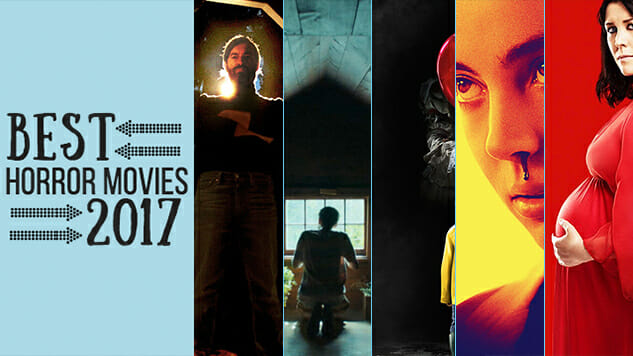
The best horror movies of 2017 writhe in grief and mourning: Evil is mundane, they say—sure—but what does that actually mean about moving on with one’s life? In two of these films, the grief-stricken struggle to communicate with those they’ve lost, realizing the process of doing so is difficult, an incredibly tedious series of motions (much like one’s everyday life) in which we’re never really sure they’re succeeding, or just feeding their own serious neuroses, plunging them deeper into depression. One film is a musical reveling in the harshness of young love, in the terrifying lengths to which someone, women especially, are expected to go to be loved. One is the highest grossing horror film of all time, and another is a genre-transcending treatise on America’s treacherous post-Obama racial landscape, both changing the industry for low-budget genre films immeasurably. Even M. Night Shyamalan’s pulpy thriller ends on a surprisingly bleak note. In 2017, we’re just trying to find some way out of all of our most pessimistic impulses. We’re just trying to not wake up every day and assume the worst.
In other words, it was a fertile year for horror, America’s most vital form of filmmaking, especially for non-white, non-male voices laying waste to the genre’s most tired tropes. A number of titles almost made our list, worth mentioning: The Blackcoat’s Daughter, a film awe-struck with despair for humanity and a mind-bogglingly great performance from Kiernan Shipka; The Girl with All the Gifts; We Are the Flesh; Alien: Covenant, proving that the older Ridley Scott gets the grosser he’s willing to be; Happy Death Day; one of many good Stephen King adaptations this year (see below), Gerald’s Game; and The Killing of a Sacred Deer, which isn’t a horror movie but kind of works like one, and anyway it’s fine because you’ll see it on other lists elsewhere.
Here are the 15 best horror movies of 2017:
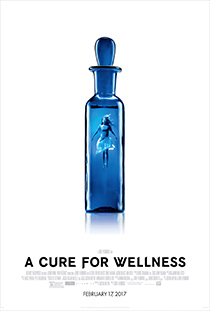 15. A Cure for Wellness
15. A Cure for Wellness
Director: Gore Verbinski
It’s a bit of a tragedy that Gore Verbinski’s delightfully bizarre, absurdly violent and grotesque A Cure For Wellness went largely unnoticed. Hollywood’s versatile trickster, Verbinski and screenwriter Justin Haythe go for broke cramming various sub-genres and mood-drenched tropes into an overstuffed, batshit-crazy horror epic, a loving nod to old Universal monster movies, among many, with the mad scientist conducting experiments that “defy god and nature” in a picturesque old castle perched atop a village that somehow skipped the 20th Century, Bojan Bazelli’s gorgeous cinematography taking full advantage of the Euro-gothic aesthetic. It’s a no-fucks-given gonzo experiment, laced with the riskiness of Giallo and the surrealist imagery of a Lynchian nightmare, disparate tones wrapped dreamily around an angry, blunt satire about the self-destructive, soul-sucking nature of greed and ambition. —Oktay Ege Kozak / Full Review
 14. XX
14. XX
Directors: Roxanne Benjamin, Annie Clark, Karyn Kusama, Jovanka Vuckovic, Sofia Carrillo
It’s important that the scariest segment in XX, Magnet Releasing’s women-helmed horror anthology film, is also its most elementary: Young people trek out into the wilderness for fun and recreation, young people incur the wrath of hostile forces, young people get dead, easy as you please. You’ve seen this movie before, whether in the form of a slasher, a creature feature, or an animal attack flick. You’re seeing it again in XX in part because the formula works, and in part because the segment in question, titled “Don’t Fall,” must be elementary to facilitate its sibling chapters, which tend to be anything but. XX stands apart from other horror films because it invites its audience to feel a range of emotions aside from just fright. You might, for example, feel heartache during Jovanka Vuckovic’s “The Box,” or the uncertainty of dread in Karyn Kusama’s “Her Only Living Son,” or nauseous puzzlement with Sofia Carrillo’s macabre, stop-motion wraparound piece, meant to function as a palate cleanser between courses (an effectively unnerving work, thanks to its impressive technical achievements). Most of all, you might have to bite your tongue to keep from laughing uncontrollably during the film’s best short, “The Birthday Party,” written and directed by Annie Clark, better known by some as St. Vincent, in her filmmaking debut. XX is a horror movie spoken with the voices of women, a necessary notice that women are revolutionizing the genre as much as men. —Andy Crump / Full Review
 13. Split
13. Split
Director: M. Night Shyamalan
Split is the film adaptation of M. Night Shyamalan’s misunderstanding of 30-year-old, since-discredited psychology textbooks on Dissociative Identity Disorder, but if we deign to treat it with scientific scrutiny, we’ll be here all night. Suffice it to say, don’t go looking at anything in this film as psychologically valid in any way. But do go see Split, because it’s probably M. Night Shyamalan’s best film since Signs. Or maybe since Unbreakable, for that matter. And if there’s one way that Split reinvigorates Shyamalan’s stock most, it’s as a visual artist and writer-director of tension and thrilling action. The film looks spectacular, full of Hitchcockian homages that remind one of Vertigo and Psycho, to name only a few. It’s a far scarier, more suspenseful film in its high moments than Shyamalan’s last film, The Visit, ever attempted to be, and it may even be funnier as well, although these moments of levity are sown sparingly for maximum impact. Mike Gioulakis deserves major props for cinematography, but the other thing that will stick in my mind is the unexpectedly great sound design, full of rumbling, groaning metallic tones. After so many films that relied on the kind of overwrought twist ending that made The Sixth Sense so buzzy in 1999, it seems like Shyamalan has finally gotten over the hump to make the kinds of stories he makes best: atmospheric, suspenseful potboilers. Here’s hoping that this newfound streak of humility is here to stay. —Jim Vorel / Full Review
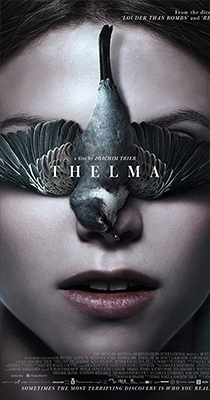 12. Thelma
12. Thelma
Director: Joachim Trier
Thelma (Eili Harboe) is a meek and quiet young woman moving away from her strict Christian parents (Henrik Rafaelsen, Ellen Dorit Petersen) for the first time in her life. To study Biology at a Norwegian university. She’s devoted to her faith and doesn’t indulge in alcohol, drugs or other earthly desires. But all of that changes when she sits next to Anja (Kaya Wilkins), a warm-hearted and empathetic schoolmate, during a study session. The two don’t even know each other yet, but Thelma’s close proximity to a girl she feels an intense attraction toward is enough to trigger a violent seizure, which may or may not be the result of her intense rejection of her feelings, spurned by her religious upbringing. With subtle yet passionate performances by its two leads, the film would have worked fine as a straight drama about Thelma’s journey towards (hopefully) acknowledging her nature. What makes Thelma so special is in the way Trier and co-writer Eskil Vogt wrap this already palpable drama around a fairly downplayed supernatural horror premise with surgical precision. —Oktay Ege Kozak / Full Review
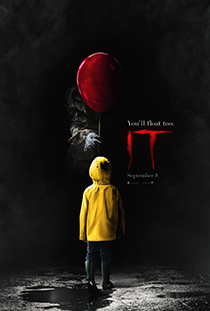 11. It
11. It
Director: Andy Muschietti
2017 was the year of blockbuster horror, if ever such a thing has been quantifiable before. Get Out, Annabelle: Creation and even would-be direct-to-video gems such as 47 Meters Down turned sizable profits, but they were just priming the box office pump for It, which shattered nearly every horror movie record imaginable. Perhaps it was the uninspiring summer blockbuster season to thank for an audience starved for something, but just as much credit must go to director Andy Muschietti and, especially, to Pennywise star Bill Skarsgård for taking Stephen King’s famously cumbersome, overstuffed novel and transforming it into something stylish, scary and undeniably entertaining. The collection of perfectly cast kids in the Loser’s Club all have the look of young actors and actresses we’ll be seeing in film for decades to come, but it’s Skarsgård’s hypnotic face, lazy eyes and incessant drool that makes It so difficult to look away from (or forget, for that matter). The inevitable Part 2 will have its hands full in giving a similarly crackling translation to the less popular adult portion of King’s story, but the camaraderie Muschietti gets in his cast and the visual flair of this first It should give us ample reasons to be optimistic. Regardless, it’s impossible to dismiss the pop cultural impact that It will continue to have for a new generation discovering its well-loved characters. —Jim Vorel
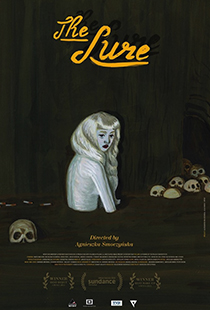 10. The Lure
10. The Lure
Director: Agnieszka Smoczynska
In Filmmaker Magazine, director Agnieszka Smoczynska called The Lure a “coming-of-age story” born of her past as the child of a nightclub owner: “I grew up breathing this atmosphere.” What she means to say, I’m guessing, is that The Lure is an even more restlessly plotted Boyhood if the Texan movie rebooted The Little Mermaid as a murderous synth-rock opera. (OK, maybe it’s nothing like Boyhood.) Smoczynska’s film resurrects prototypical fairy tale romance and fantasy without any of the false notes associated with Hollywood’s “gritty” reboot culture. Poland, the 1980s and the development of its leading young women provide a multi-genre milieu in which the film’s cannibalistic mermaids can sing their sultry, often violently funny siren songs to their dark hearts’re content. While Ariel the mermaid Disney princess finds empathy with young girls who watch her struggle with feelings of longing and entrapment, The Lure’s flesh-hungry, viscous, scaly fish-people are a gross, haptic and ultimately effective metaphor for the maturation of this same audience. In the water, the pair are innocent to the ways of humans (adults), but on land develop slimes and odors unfamiliar to themselves and odd (yet strangely attractive) to their new companions. Reckoning with bodily change, especially when shoved into the sex industry like many immigrants to Poland during the collapse of that country’s communist regime in the late ’80s, the film combines the politics of the time with the sexual politics of a girl becoming a woman (of having her body politicized). And though The Lure may bite off more human neck than it can chew, especially during its music-less plot wanderings, it’s just so wonderfully consistent in its oddball vision you won’t be able to help but be drawn in by its mesmerizing thrall. —Jacob Oller / Full Review
 9. The Transfiguration
9. The Transfiguration
Director: Michael O’Shea
Michael O’Shea’s The Transfiguration refreshingly refuses to disguise its influences and reference points, instead putting them all out there in the forefront for its audience’s edification, name-dropping a mouthful of noteworthy vampire films and sticking their very titles right smack dab in the midst of its mise en scène. They can’t be missed: Nosferatu is a big one, and so’s The Lost Boys, but none informs O’Shea’s film as much as Let the Right One In, the unique 2009 Swedish genre masterpiece. Like Tomas Alfredson’s bloodsucking coming-of-age tale, The Transfiguration casts a young’n, Milo (Eric Ruffin), as its protagonist, contrasting the horrible particulars of a vampire’s feeding habits against the surface innocence of his appearance. Unlike Let the Right One In, The Transfiguration may not be a vampire movie at all, but a movie about a lonesome kid with an unhealthy fixation on gothic legends. You may choose to view Milo as O’Shea’s modernized update of the iconic monster or a child brimming with inner evil; the film keeps its ends open, its truths veiled and only makes its sociopolitical allegories plain in its final, haunting images. —Andy Crump
 8. Creep 2
8. Creep 2
Director: Patrick Brice
Creep was not a movie begging for a sequel. About one of cinema’s more unique serial killers—a man who seemingly needs to form close personal bonds with his quarry before dispatching them as testaments to his “art”—the 2014 original was self-sufficient enough. But Creep 2 is that rare follow-up wherein the goal seems to be not “let’s do it again,” but “let’s go deeper”—and by deeper, we mean much deeper, as this film plumbs the psyche of the central psychopath (who now goes by) Aaron (Mark Duplass) in ways both wholly unexpected and shockingly sincere, as we witness (and somehow sympathize with) a killer who has lost his passion for murder, and thus his zest for life. In truth, the film almost forgoes the idea of being a “horror movie,” remaining one only because we know of the atrocities Aaron has committed in the past, meanwhile becoming much more of an interpersonal drama about two people exploring the boundaries of trust and vulnerability. Desiree Akhavan is stunning as Sara, the film’s only other principal lead, creating a character who is able to connect in a humanistic way with Aaron unlike anything a fan of the first film might think possible. Two performers bare it all, both literally and figuratively: Creep 2 is one of the most surprising, emotionally resonant horror films in recent memory. —Jim Vorel
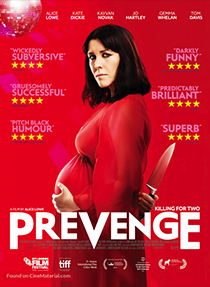
Director: Alice Lowe
Maybe getting close enough to gut a person when you’re seven months pregnant is a cinch—no one likely expects an expecting mother to cut their throat—but all the positive encouragement Ruth’s (Alice Lowe) unborn daughter gives her helps, too. The kid spends the film spurring her mother to slaughter seemingly innocent people from in utero, an invisible voice of incipient malevolence sporting a high-pitched giggle that’ll make your skin crawl. “Pregnant lady goes on a slashing spree at the behest of her gestating child” sounds like a perfectly daffy twist on one of the horror genre’s most enduring contemporary niches on paper. In practice it’s not quite so daffy, more somber than it is silly, but the bleak tone suits what writer, director, and star Lowe wants to achieve with her filmmaking debut. Another storyteller might have designed Prevenge as a more comically-slanted effort, but Lowe has sculpted it to smash taboos and social norms. Because Prevenge hates human beings with a disturbing passion—even human beings who aren’t selfish, awful, creepy or worse—in it, child-rearing is a form of real-life body horror that’s as smartly crafted and grimly funny as it is terrifying. —Andy Crump / Full Review
 6. mother!
6. mother!
Director: Darren Aronofsky
Try as you might to rationalize Darren Aronofsky’s mother!, mother! does not accept rationalization. There’s little reasonable ways to construct a single cohesive interpretation of what the movie tries to tell us. There is no evidence of Aronosfky’s intention beyond what we’ve intuited from watching his films since the ’90s. The most ironclad comment you can make about mother! is that it’s basically a matryoshka doll layered with batshit insanity. Unpack the first, and you’re met immediately by the next tier of crazy, and then the next, and so on, until you’ve unpacked the whole thing and seen it for what it is: A spiritual rumination on the divine ego, a plea for environmental stewardship, an indictment of entitled invasiveness, an apocalyptic vision of America in 2017, a demonstration of man’s tendency to leech everything from the women they love until they’re nothing but a carbonized husk, a very triggering reenactment of the worst house party you’ve ever thrown. mother! is a kitchen sink movie in the most literal sense: There’s an actual kitchen sink here, Aronofsky’s idea of a joke, perhaps, or just a necessarily transparent warning. mother! is about everything. Maybe the end result is that it’s also about nothing. But it’s really about whatever you can yank out of it, it’s elasticity the most terrifying thing about it. —Andy Crump
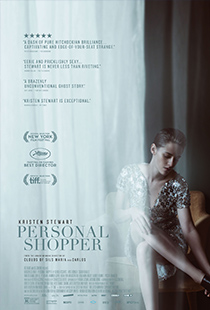 5. Personal Shopper
5. Personal Shopper
Director: Olivier Assayas
The pieces don’t all fit in Personal Shopper, but that’s much of the fun of writer-director Olivier Assayas’s enigmatic tale of Maureen (Kristen Stewart, a wonderfully unfathomable presence), who may be in contact with her dead twin brother. Or maybe she’s being stalked by an unseen assailant. Or maybe it’s both. To attempt to explain the direction Personal Shopper takes is merely to regurgitate plot points that don’t sound like they belong in the same film. But Assayas is working on a deeper, more metaphorical level, abandoning strict narrative cause-and-effect logic to give us fragments of Maureen’s life refracted through conflicting experiences. Nothing happens in this film as a direct result of what came before, which explains why a sudden appearance of suggestive, potentially dangerous text messages could be interpreted as a literal threat, or as some strange cosmic manifestation of other, subtler anxieties. Personal Shopper encourages a sense of play, moving from moody ghost story to tense thriller to (out of the blue) erotic character study. But that genre-hopping (not to mention the movie’s willfully inscrutable design) is Assayas’s way of bringing a lighthearted approach to serious questions about grieving and disillusionment. The juxtaposition isn’t jarring or glib—if anything, Personal Shopper is all the more entrancing because it won’t sit still, never letting us be comfortable in its shifting narrative. —Tim Grierson / Full Review
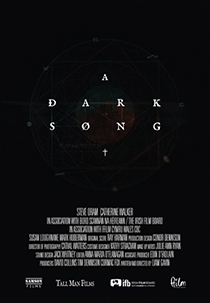 4. A Dark Song
4. A Dark Song
Director: Liam Gavin
In Liam Gavin’s black magic genre oddity, Sophia (Catherine Walker), a grief-stricken mother, and the schlubby, no-nonsense occultist (Steve Oram) she hires devote themselves to a long, meticulous, painstaking ritual in order to (they hope) communicate with her dead son. Gavin lays out the ritual specifically and physically—over the course of months of isolation, Sophia undergoes tests of endurance and humiliation, never quite sure if she’s participating in an elaborate hoax or if she can take her spiritual guide seriously when he promises her he’s succeeded in the past. Paced to near perfection, A Dark Song is ostensibly a horror film but operates as a dread-laden procedural, mounting tension while translating the process of bereavement as patient, excruciating manual labor. In the end, something definitely happens, but its implications are so steeped in the blurry lines between Christianity and the occult that I still wonder what kind of alternate realms of existence Gavin is getting at. But A Dark Song thrives in that uncertainty, feeding off of monotony. Sophia may hear phantasmagorical noise coming from beneath the floorboards, but then substantial spans of time pass without anything else happening, and we begin to question, as she does, whether it was something she did wrong (maybe, when tasked with not moving from inside a small chalk circle for days at a time, she screwed up that portion of the ritual by allowing her urine to dribble outside of the boundary) or whether her grief has blinded her to an expensive con. Regardless, that “not knowing” is the scary stuff of everyday life, and by portraying Sophia’s profound emotional journey as a humdrum trial of physical mettle, Gavin reveals just how much pointless, even terrifying work it can be anymore to not only live the most ordinary of days, but to make it to the next. —Dom Sinacola
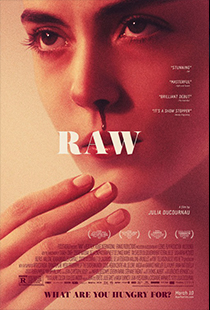 3. Raw
3. Raw
Director: Julia Ducournou
If you’re the proud owner of a twisted sense of humor, you might sell your friends on Julia Ducournau’s Raw as a coming-of-age movie in a bid to trick them into seeing it. Yes, the film’s protagonist, naive incoming college student Justine (Garance Marillier), comes of age over the course of its running time: She parties, she breaks out of her shell and she learns about who she really is on the verge of adulthood. But most kids who discover themselves in the movies don’t realize that they’ve spent their lives unwittingly suppressing an innate, nigh-insatiable need to consume raw meat. Allow Ducournau her cheekiness: More than a wink and nod to the picture’s visceral particulars, her film’s title is an open concession to the harrowing quality of Justine’s grim blossoming. Nasty as the film gets, and it does indeed get nasty, the harshest sensations Ducournau articulates here tend to be the ones we can’t detect by merely looking. Fear of feminine sexuality, family legacies, popularity politics and the uncertainty of self govern Raw’s horrors as much as exposed and bloody flesh. It’s a gorefest that offers no apologies and plenty more to chew on than its effects. —Andy Crump
 2. It Comes at Night
2. It Comes at Night
Director: Trey Edward Shults
It Comes at Night is ostensibly a horror movie, moreso than Shults’s debut, Krisha, but even Krisha was more of a horror movie than most measured family dramas typically are. Perhaps knowing this, Shults calls It Comes at Night an atypical horror movie, but—it’s already obvious after only two of these—Shults makes horror movies to the extent that everything in them is laced with dread, and every situation suffocated with inevitability. For his sophomore film, adorned with a much larger budget than Krisha and cast with some real indie star power compared to his previous cast (of family members doing him a solid), Shults imagines a near future as could be expected from a somber flick like this. A “sickness” has ravaged the world and survival is all that matters for those still left. In order to keep their shit together enough to keep living, the small group of people in Shults’s film have to accept the same things the audience does: That important characters will die, tragedy will happen and the horror of life is about the pointlessness of resisting the tide of either. So it makes sense that It Comes at Night is such an open wound of a watch, pained with regret and loss and the mundane ache of simply existing: It’s trauma as tone poem, bittersweet down to its bones, a triumph of empathetic, soul-shaking movie-making. —Dom Sinacola / Full Review
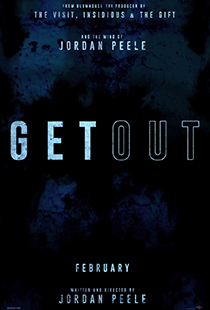 1. Get Out
1. Get Out
Director: Jordan Peele
Peele’s a natural behind the camera, but Get Out benefits most from its deceptively trim premise, a simplicity which belies rich thematic depth. Chris (Daniel Kaluuya) and Rose (Allison Williams) go to spend a weekend with her folks in their lavish upstate New York mansion, where they’re throwing the annual Armitage bash with all their friends in attendance. Chris immediately feels out of place; events escalate from there, taking the narrative in a ghastly direction that ultimately ties back to the unsettling sensation of being the “other” in a room full of people who aren’t like you—and never let you forget it. Put indelicately, Get Out is about being black and surrounded by whites who squeeze your biceps without asking, who fetishize you to your face, who analyze your blackness as if it’s a fashion trend. At best Chris’s ordeal is bizarre and dizzying, the kind of thing he might bitterly chuckle about in retrospect. At worst it’s a setup for such macabre developments as are found in the domain of horror. That’s the finest of lines Peele and Get Out walk without stumbling. —Andy Crump / Full Review